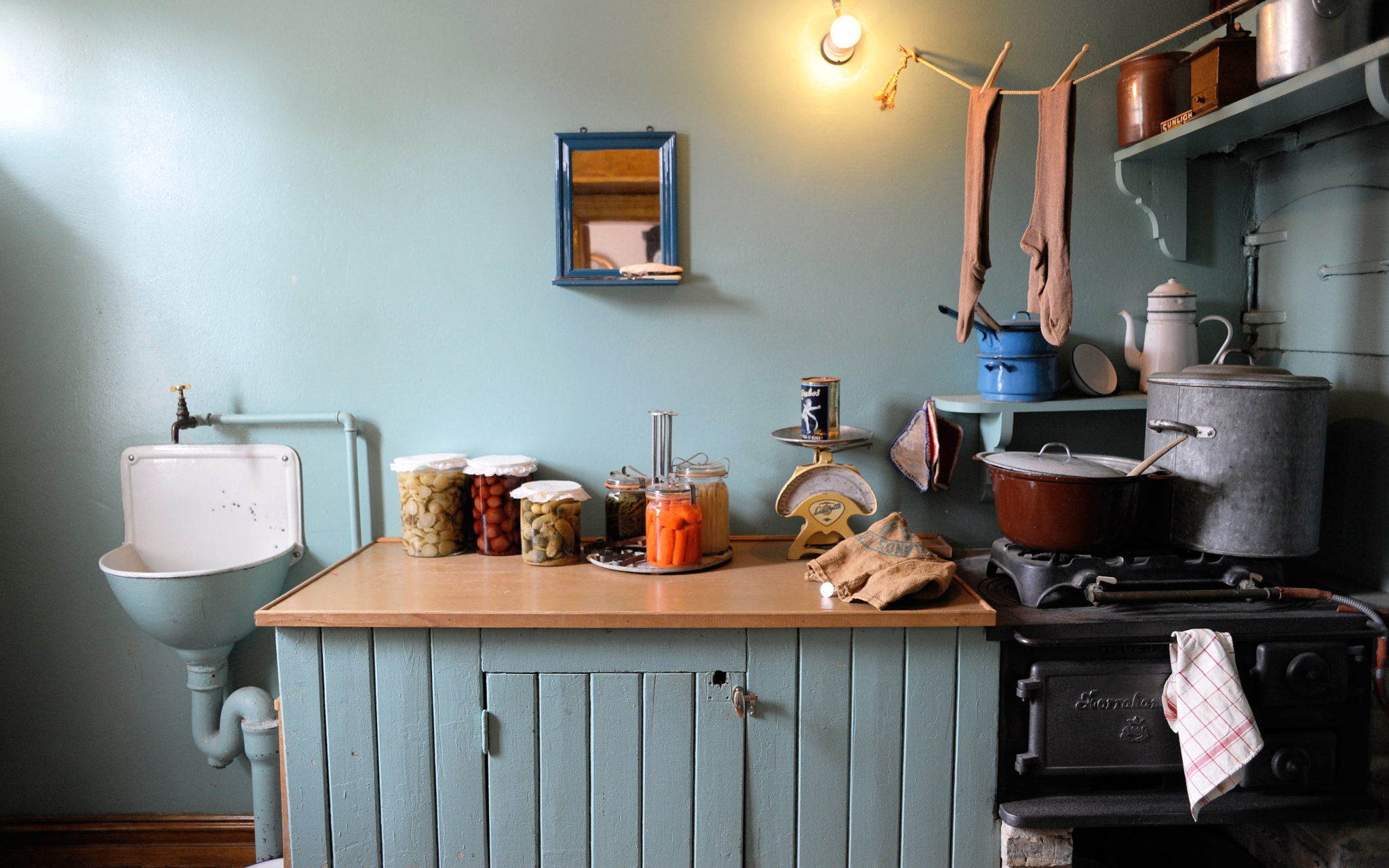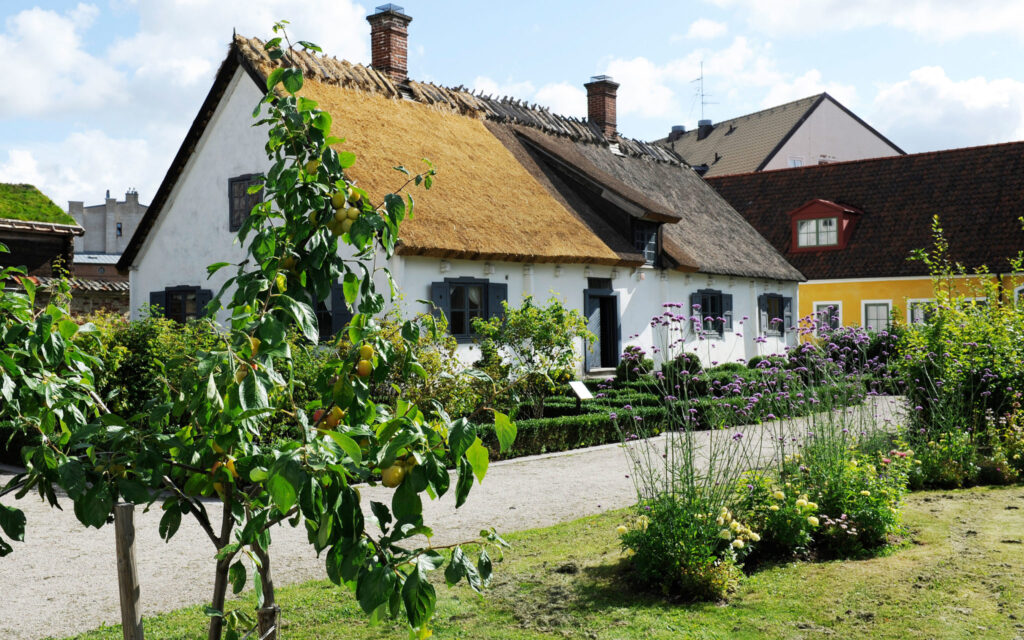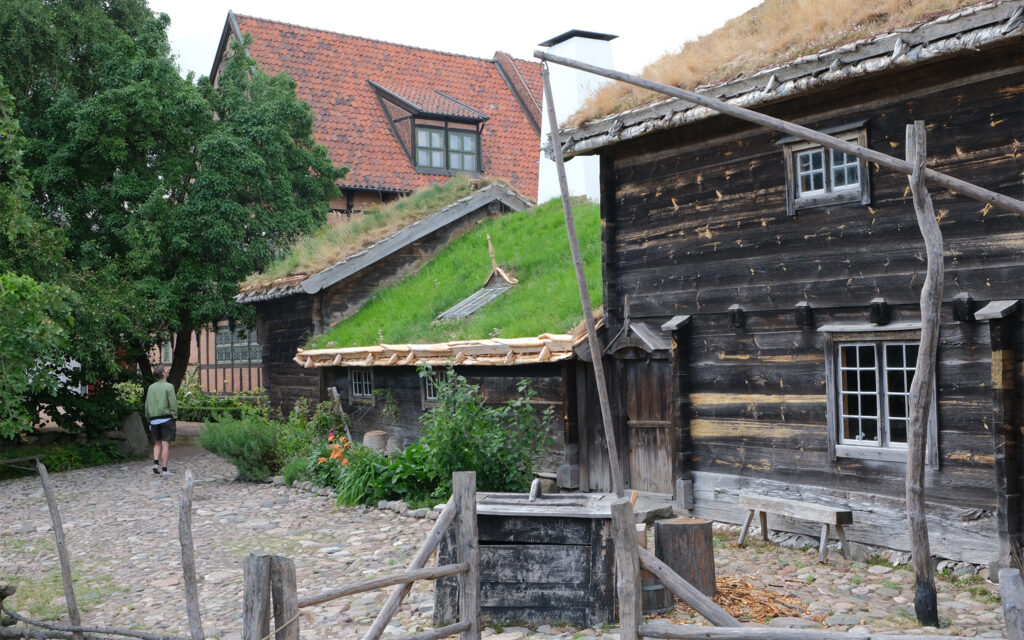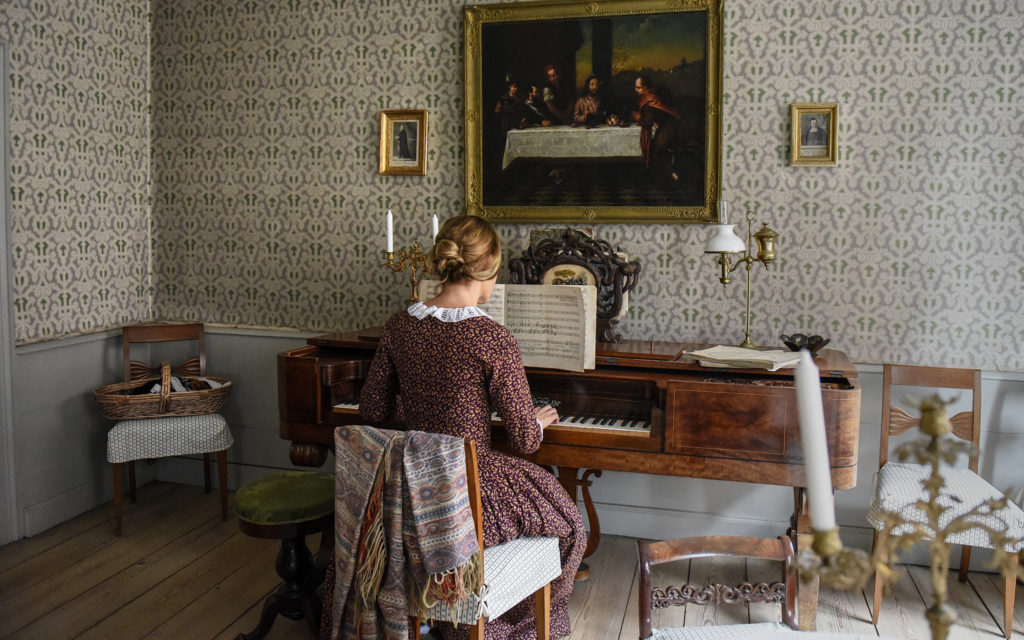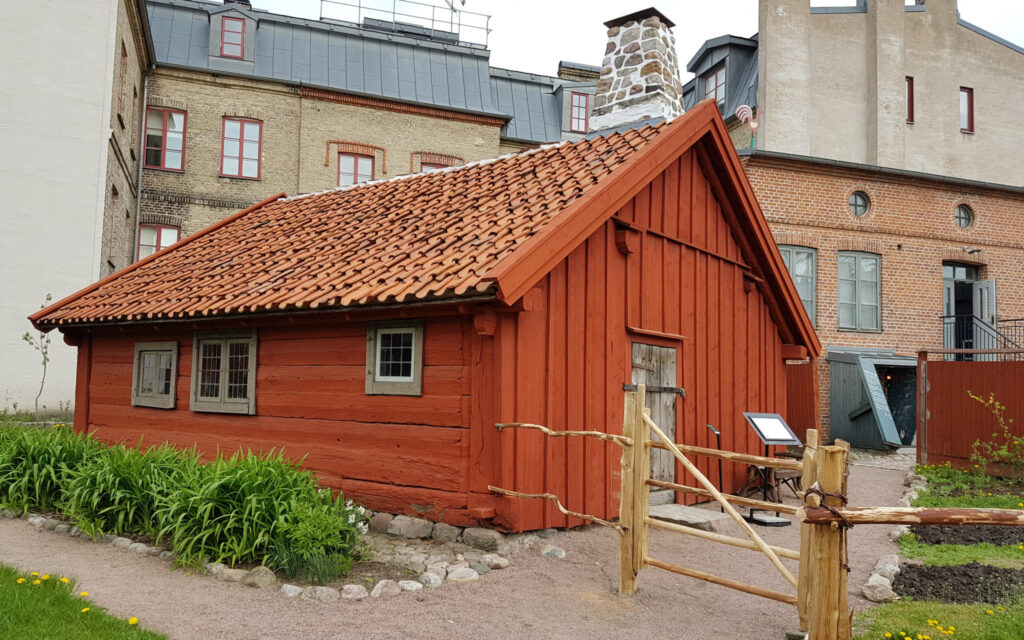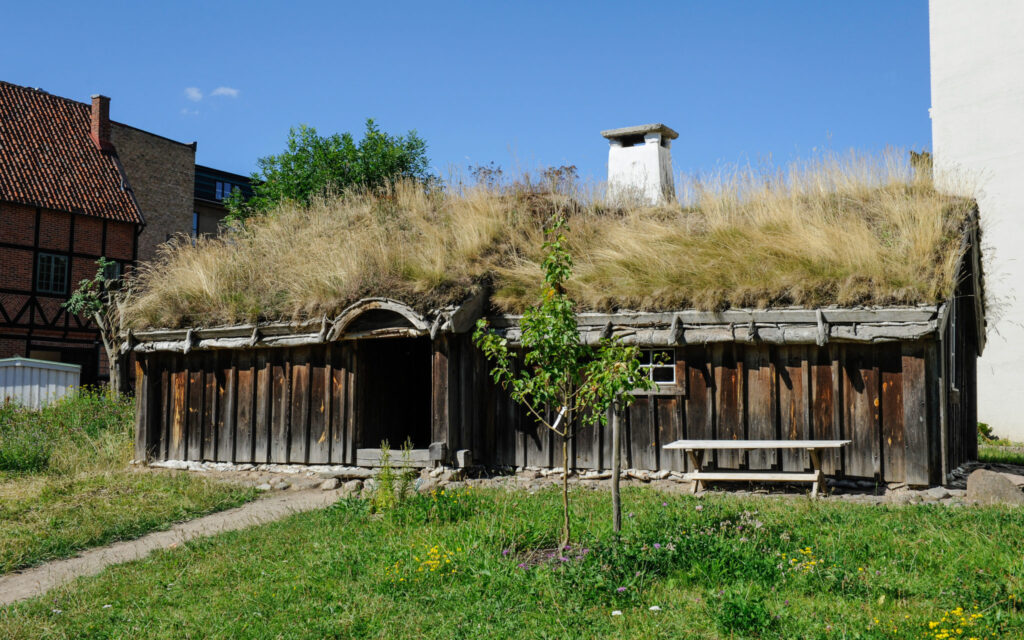You are about to step into the 1930s and the home of the working-class Andersson family. The dawn of a new era is signalled by the presence of electricity, running water, a radio, bright wallpaper, light curtains and bookshelves displaying an array of fiction and non-fiction works. Before you enter this little house, have a look around the courtyard.
An outdoor toilet still remains in the corner. In 1930, you would have also seen a scullery, woodshed and workshop. Children played in the streets and courtyards and ran errands for their parents. The neighbourhood had a dairy, a tobacco shop, a florist, a butcher’s, a bakery and five grocers.
Go ahead and open the right-hand door of the yellow house! You will step straight into the Andersson’s simple little kitchen. On top of the oven is a gas cooker. Gas was a modern innovation, and was used alongside the wood-fired oven.
The tap in the kitchen only provided cold water, and there was no bathroom in the house. A built-in washtub in the basement of the brick house opposite was used for laundry and bathing.
Continue into the next room. On the wall directly opposite the door are portraits of Siri and Nils Andersson. Nils worked as a painter/decorator but spent his evenings studying, in the hopes of becoming a teacher. Siri was a trained seamstress but mainly stayed at home looking after the house and children. In 1930, they had just had their second child, Siv, whose older brother Ninne was 6 years old.
By the window stands Siri’s sewing machine, and the dining table is set up for ironing. This is also where all the meals were eaten. In the evenings, the family gathered around the radio. The recording that you can hear is the finance minister of the day, Ernst Wigforss, speaking on the virtues of frugality.
The room furthest in, and closest to the street, was not used much in winter. It was difficult to get a fire going in the wood burner. But at Christmas, the festive meal was served in here, and the Christmas tree, dressed in twinkling electric lights, took pride of place by the window.
Further reading:
The booklet Kulturen Open-Air Museum provides more information about the Worker’s Home and the other buildings included in this tour. It is available in the museum shop for 60 SEK.
[Disclaimer: final check run through ChatGPT 17/6 @ 11:30]
